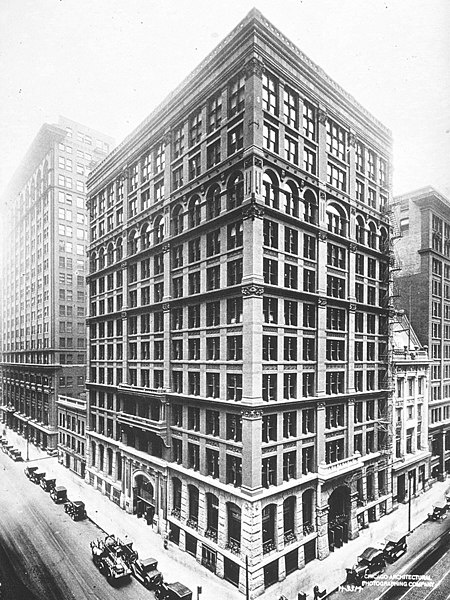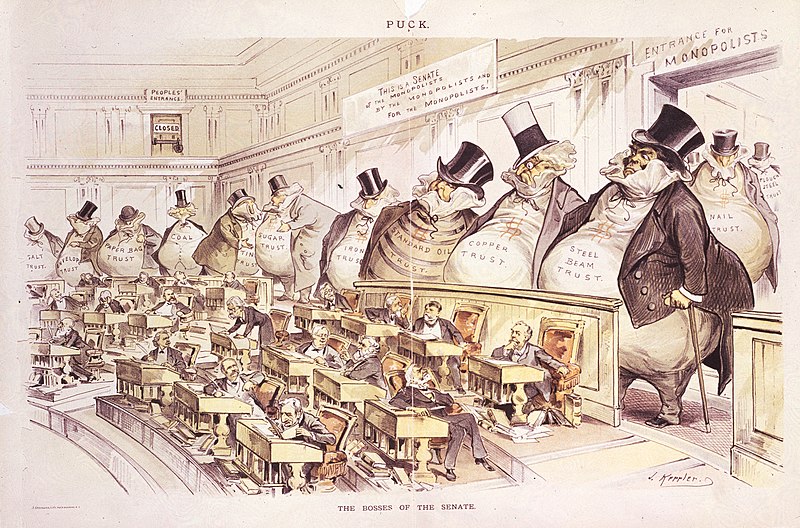The Gilded Age, spanning roughly from the 1870s to the early 1900s, was a transformative period in American history characterized by rapid industrialization, extreme wealth inequality, and significant social and political changes.
During this era, the United States experienced a surge in technological advancements, urbanization, and economic growth, but also grappled with profound social and labor-related challenges.
This brief introduction provides an overview of the key features of the Gilded Age, setting the stage for a deeper exploration of this dynamic period in American history.
Gilded Age Facts
1. Rapid industrialization
During the Gilded Age, the United States underwent a period of rapid industrialization. This meant a shift from agrarian and craft-based economies to ones dominated by factories and large-scale manufacturing.
Also Read: Industrial Revolution Timeline
Industries such as steel, oil, textiles, and railroads experienced significant growth. Innovations in machinery and production methods, like the Bessemer process for steel production, contributed to this industrial boom.
Industrialization led to increased production efficiency, which, in turn, lowered the cost of goods and made them more accessible to a wider range of consumers.

2. Technological advancements (telegraph, telephone, etc.)
The Gilded Age was marked by numerous technological advancements that transformed daily life. Notable inventions included the telegraph, telephone, and electric lighting.
The telegraph revolutionized long-distance communication by allowing messages to be transmitted quickly over vast distances. This innovation played a crucial role in business, news dissemination, and government communication.
Also Read: Timeline of the Gilded Age
The telephone, invented by Alexander Graham Bell, revolutionized personal communication and gradually became a common feature in American homes and businesses.
Electric lighting, pioneered by Thomas Edison, replaced gas lamps and candles, providing a safer and more efficient way to illuminate homes and streets.
3. Urbanization and the growth of major cities
The Gilded Age witnessed a massive migration of people from rural areas to urban centers. Cities like New York, Chicago, and Philadelphia experienced explosive population growth.
This urbanization was driven by the availability of factory jobs in cities and the allure of a more modern lifestyle. People sought employment opportunities in factories, mills, and other industries.
The rapid growth of cities brought about challenges such as overcrowding, inadequate housing, sanitation issues, and increased crime. Many cities struggled to keep pace with the influx of new residents and the demand for essential services.
4. Extreme wealth inequality
The Gilded Age was infamous for its extreme wealth inequality, where a small fraction of the population amassed enormous fortunes, while the majority struggled to make ends meet.
Wealthy industrialists and financiers like John D. Rockefeller, Andrew Carnegie, and J.P. Morgan accumulated vast amounts of wealth through their control of major industries such as oil, steel, and finance.
This wealth gap was reflected in the opulent lifestyles of the upper class, who flaunted their affluence with extravagant mansions, luxurious parties, and fine art collections, while many working-class individuals lived in poverty.

5. Robber barons like Rockefeller and Carnegie
The term “robber barons” was used to describe the industrialists and business magnates of the Gilded Age, implying that they had acquired their wealth through ruthless and exploitative means.
John D. Rockefeller’s Standard Oil, for example, engaged in predatory pricing and anti-competitive practices to control the oil industry.
Andrew Carnegie’s steel empire was accused of underpaying workers and suppressing unions to maintain profitability.
J.P. Morgan’s financial empire was involved in consolidating industries through mergers and acquisitions, often at the expense of smaller competitors.
6. Labor strikes and unrest
The extreme working conditions and low wages experienced by many laborers during the Gilded Age led to numerous labor strikes and acts of unrest.
Workers often toiled in dangerous environments with long hours, minimal job security, and no safety regulations. Child labor was also prevalent.
Prominent labor strikes included the Haymarket Riot of 1886 in Chicago, which started as a rally for workers demanding an eight-hour workday but turned violent, and the Pullman Strike of 1894, where railroad workers protested wage cuts and poor living conditions.
These strikes sometimes resulted in clashes with law enforcement or even the military, leading to casualties and further fueling tensions between labor and management.

7. Political corruption and machine politics
The Gilded Age was rife with political corruption and machine politics, where political parties and politicians were often controlled by powerful business interests.
Political machines, such as New York’s Tammany Hall, were notorious for their influence over urban politics. They provided jobs and social services in exchange for political loyalty, but also engaged in bribery and graft.
Business magnates and corporations often contributed significant sums of money to political campaigns and candidates, influencing legislation and regulatory decisions in their favor.
8. Westward expansion, including the completion of the transcontinental railroad
The Gilded Age saw the completion of the First Transcontinental Railroad in 1869, which connected the eastern and western coasts of the United States. This monumental achievement facilitated the movement of goods and people, spurring economic growth and westward expansion.
The Homestead Act of 1862 encouraged settlement of the western frontier by offering 160 acres of public land to settlers for a small fee if they agreed to improve the land.
The expansion westward had a profound impact on Native American populations as their lands were increasingly encroached upon and their way of life disrupted.
9. High immigration rates
The Gilded Age witnessed a significant influx of immigrants to the United States, primarily from European countries. Many came in search of economic opportunities and to escape poverty and political unrest in their home countries.
Immigration contributed to the cultural diversity of American cities, with immigrant communities forming in urban areas.
However, the surge in immigration also led to nativist sentiments and anti-immigrant movements, as some Americans expressed concerns about the impact of immigration on jobs and culture.
10. Emergence of new cultural developments and writers
Despite the challenges and inequalities of the Gilded Age, it was also a time of cultural growth and creativity.
American literature flourished during this period, with authors like Mark Twain, known for works like “The Adventures of Huckleberry Finn,” offering satirical commentary on the social issues of the time.
Realist literature gained prominence, reflecting the everyday lives of ordinary people and addressing social and moral concerns.
New art forms and movements, such as Impressionism in painting and ragtime music, emerged, reflecting the changing tastes and sensibilities of the era.
